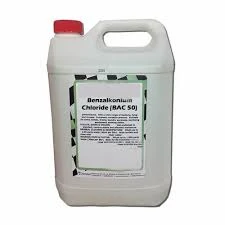Nonionic Polyacrylamide
Nonionic Polyacrylamide Properties, Applications, and Environmental Impact
Nonionic polyacrylamide (NPAM) is a synthetic polymer widely recognized for its versatile applications in various industries due to its unique characteristics. As a type of polyacrylamide, NPAM is water-soluble and free of ionizable groups, which distinguishes it from its cationic and anionic counterparts. This article explores the properties, applications, and environmental considerations associated with nonionic polyacrylamide.
Properties of Nonionic Polyacrylamide
NPAM is characterized by its hydrophilicity, high molecular weight, and excellent solubility in water. The absence of ionic charge in its polymer structure makes NPAM particularly stable under a variety of pH and temperature conditions. This stability is essential in many applications where fluctuations in environmental conditions can occur. Furthermore, NPAM exhibits good thickening, flocculating, and binding properties, which enhance its functionality in diverse settings.
The molecular weight of NPAM can vary significantly, influencing its rheological properties and performance in different applications. High molecular weight NPAM is often preferred for applications requiring enhanced viscosity and gel formation, while lower molecular weight variants may be employed where rapid dissolution and lower viscosity are desired.
Applications of Nonionic Polyacrylamide
NPAM is commonly used in various industries due to its multifunctional capabilities. In the water treatment sector, it serves as a flocculating agent to facilitate the aggregation of suspended particles, aiding in the clarification of water and wastewater. By enhancing sedimentation and filtration processes, NPAM plays a crucial role in improving water quality and ensuring compliance with environmental regulations.
nonionic polyacrylamide

The oil and gas industry also utilizes NPAM as a key component in enhanced oil recovery (EOR) processes. Its ability to improve the viscosity of water used in oil extraction operations leads to better displacement of crude oil, thus increasing extraction efficiency. Additionally, NPAM finds applications in soil stabilization, agriculture, and even in the cosmetics industry for its thickening properties.
In pharmaceuticals, NPAM is employed in drug delivery systems owing to its biocompatibility and non-toxic nature. As a polymer matrix, NPAM can facilitate the controlled release of active pharmaceutical ingredients, making it an asset in drug formulation.
Environmental Impact and Considerations
While NPAM has numerous advantages, it is essential to consider its environmental impact. Being a synthetic polymer, concerns exist regarding its biodegradability and potential accumulation in ecosystems. Research indicates that NPAM may not break down easily, which raises questions about its long-term effects in aquatic environments.
However, many manufacturers are focusing on developing biodegradable alternatives or incorporating environmentally friendly practices in production to mitigate these concerns. Moreover, proper handling and disposal practices can minimize potential risks associated with NPAM use in various applications.
In conclusion, nonionic polyacrylamide is a versatile polymer that plays a significant role across multiple industries. Its unique properties lend themselves to a wide range of applications, particularly in water treatment and oil recovery. While the environmental concerns associated with NPAM cannot be overlooked, ongoing research and advancements in sustainable practices are paving the way for its responsible use. As industries continue to explore the benefits of NPAM, it remains a valuable asset in meeting both functional requirements and environmental responsibilities.
-
The Power of Isothiazolinones in Modern ApplicationsNewsMay.08,2025
-
Flocculants in Water TreatmentNewsMay.08,2025
-
Flocculants and Chemical Solutions: What You Need to KnowNewsMay.08,2025
-
Flocculants and Chemical Solutions: A Growing IndustryNewsMay.08,2025
-
Essential Chemicals: Polymaleic Anhydride and MoreNewsMay.08,2025
-
Acrylic Polymers: Essential Solutions for IndustryNewsMay.08,2025





